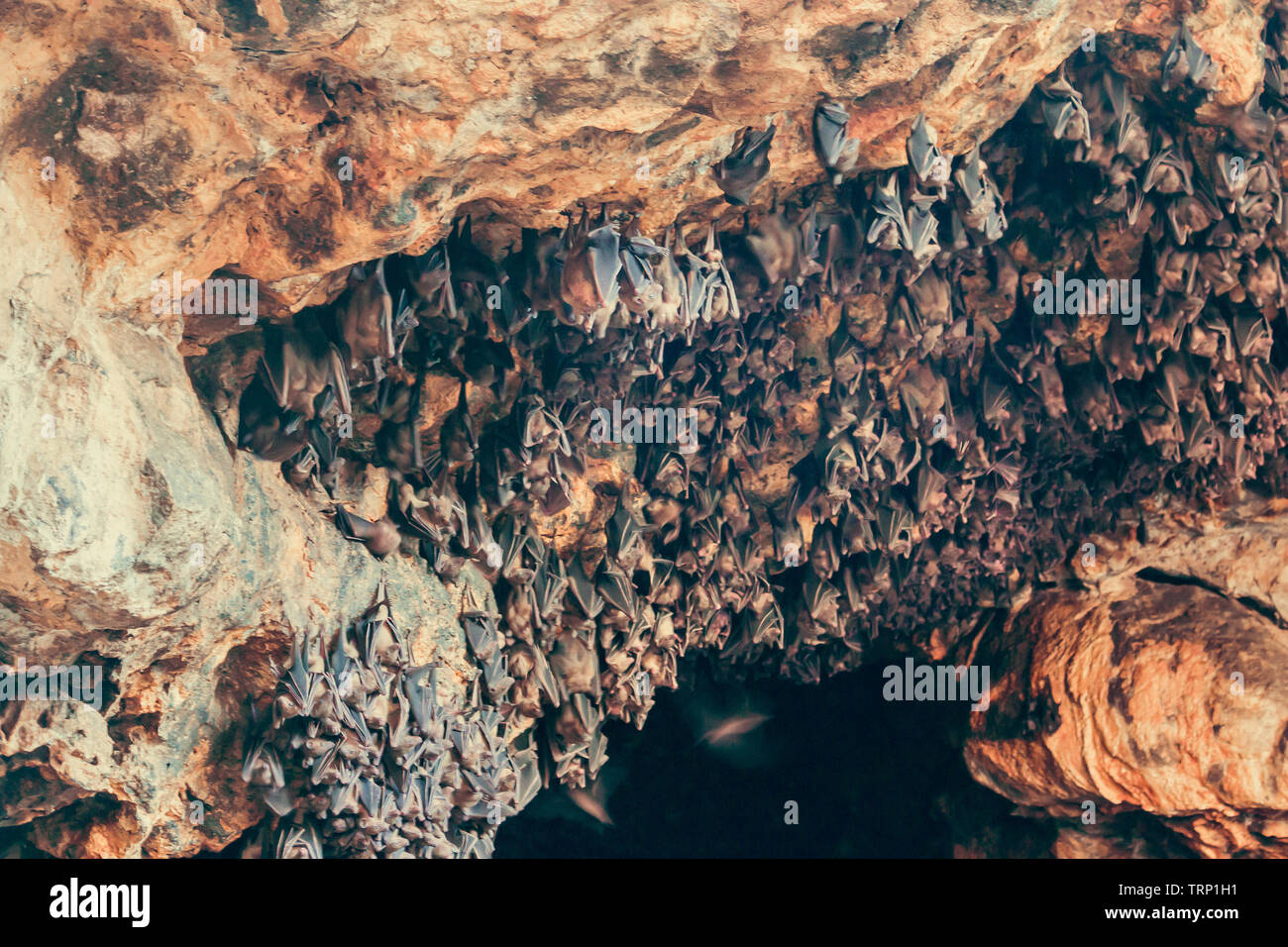What species of Bat is this I found them in a small cave on the west Biology Diagrams For example, some species of cave-dwelling bats have been observed roosting in areas with higher oxygen levels, such as near cave entrances or in areas with strong air currents. How do cave ecosystem organisms living in the dark zone obtain their food? The food chain in cave ecosystems is based on organic matter that enters the cave from Fruits/ flowers are eaten by fruit bats. Fruit bats are eaten by a snake. Snakes are eaten by a large bird like an eagle. The Monfort bat cave ecosystem is a really interesting ecosystem because the process of food chain cycle is evident in the surrounding area. For more information about the Monfort Bat cave, visit the link below: Cave Fish: These aquatic predators occupy the top tiers of the cave's aquatic food chain, feeding on smaller invertebrates like cave shrimp and snails.; Bats: Bats, along with cave crickets and woodrats, venture out at night to feed in the surrounding forests and grasslands, bringing valuable nutrients back into the cave system.; Decomposers: Worms and other decomposers play a crucial role

What Are the Secondary Consumers in the Carlsbad Caverns Food Web? Secondary consumers in the Carlsbad Caverns food web are primarily insectivores and small predators. Key examples include: Brazilian free-tailed bats; Population: Estimated at over 1 million during peak summer months; Insect consumption: Up to 1,200 insects per bat per hour

PDF Cave Food Web Biology Diagrams
The complete, generic food chain of a bat from bottom to top is as follows: plant, insect, bat, and a predatory bird, mammal or reptile. The 30 million bats living in Bracken Cave in Texas gobble 250 tons of insects every night. A small colony of 150 tiny brown bats can eat as many as 33 million rootworms in one summer, thereby saving

The third, fourth, and fifth fingers, or digits, of the hand support most of the wing membrane. The thumb is a tiny hook on top of the wing. The wing membrane connects with the body, back legs, and, in most bats, encloses the tail. Cave bats weigh very little, less than an ounce. Bats can live up to 25 years and usually have only one young each When food energy moves from the sun to a plant, to an animal, to another animal, that is a food chain. The fact that animals live in caves at all, proves that caves are not isolated from the surface. On the surface, all food chains start with green plants, which make food from sunlight. In a dark cave, there is no sunlight and no green plants. A food chain is a simplified way of showing energy relationships between plants and animals in an ecosystem. For example, a food chain showing sun→plant seed→mouse→owl shows that a seed is at the entrance of a cave that still allows bats in and out but preserves the delicate environment of the cave is a positive effect humans can have
